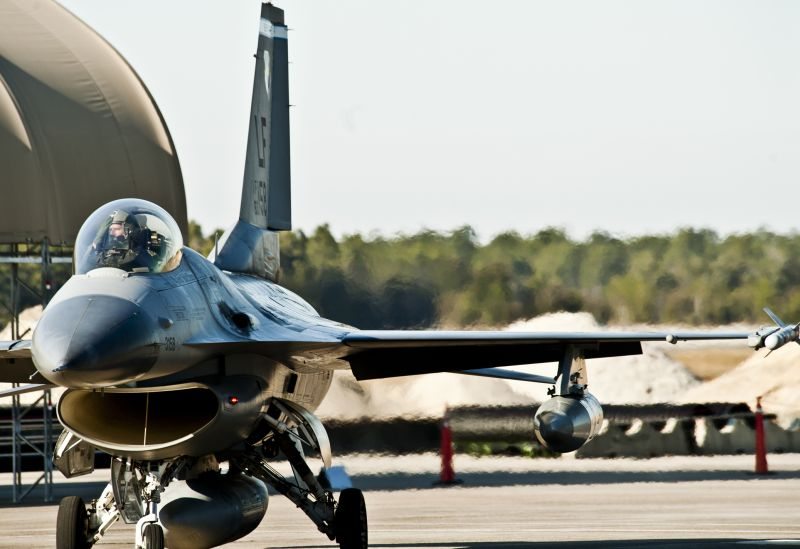The Air Force expects to invest over $230 billion to operate, maintain, modernize, and recapitalize its tactical air forces during fiscal years 2011 through 2015. This makes up nearly 70 percent of the Department of Defense’s (DOD) total expected tactical aircraft investment over that time.
Despite this large investment, the Air Force continues to project that its inventory of fighter and attack aircraft will drop below required levels and that those shortfalls will persist through at least 2030. However, the timing and magnitude of projected shortfalls continue to fluctuate. In April 2008, senior Air Force leaders testified before Congress that they expected the Air Force fighter shortfall to peak at about 800 aircraft in the mid-2020s. Since that time the Air Force has reduced its overall requirement and adjusted its assumptions about Joint Strike Fighter (JSF) procurement and the viability of legacy aircraft. As a result, the Air Force now expects its shortfall to peak at about 200 aircraft.
Still, this poses a challenge as the Air Force must effectively balance its investments between the JSF program and efforts to keep legacy aircraft viable for longer periods than originally planned.
In 2009, Congress directed the Air Force to provide three reports addressing the service’s fighter force structure plans in light of its projected fighter aircraft shortfall. One report was to detail the Air Force’s rationale for retiring about 250 aircraft in light of the pending shortfall, while the other two reports were to address alternative investment options for mitigating the shortfall, including the interim procurement of new so-called “4.5 generation” fighter aircraft, and upgrades service life extension programs for current legacy aircraft. Congress defined new 4.5 generation fighter aircraft as including F-15, F-16, and F-18 aircraft that have advanced radar, data-link, and avionics capabilities and the capability to deploy advanced armaments.
The Air Force delivered the first report in January 2010 and last two in April 2010. and the concluded that: In general, the Air Force concluded that: (1) It could reduce its total fighter and attack aircraft inventory by about 250 aircraft and still effectively perform its missions with slightly increased risk; (2) Effective management of the JSF program coupled with investments in modernizing and upgrading legacy F-16 aircraft would mitigate the projected shortfall; (3) Procuring 4.5 generation aircraft to mitigate the projected shortfall would not support the Air Force’s overall fleet modernization plans for an all-stealth future fighter force and therefore is not supported; (4) Extending the service life and upgrading current fighters would be 10 to 15 percent of the cost of procuring new upgraded legacy aircraft and provide essentially the same capability; and (5) The Air Force would still be able to perform its homeland defense mission.
The Ike Skelton National Defense Authorization Act (NDAA) for Fiscal Year 2011 directed GAO to evaluate the sufficiency, adequacy, and conclusions in the three Air Force reports. In response, this report assesses (1) whether the Air Force reports addressed the topics and issues required by Congress, (2) the currency and relevance of service plans and strategic level guidance that informed the Air Force’s conclusions, and (3) the robustness of the data and analyses underpinning those conclusions.
While the three Air Force fighter reports generally covered the topics and issues identified by Congress, the conclusions reflected previously established service plans and strategic level guidance that was dated by the time the reports were issued.
In addition, the robustness of the analyses done to support the conclusions in the reports was limited by JSF program instability and the absence of F-16 durability and fleet viability data. The reports presented limited new analyses and primarily summarized the Air Force’s long-standing plan to transition to an all-stealth 5th generation fighter force and the desire therefore to avoid large investments in legacy, non-stealth fighters that could divert funds from this plan. Analyses underpinning shortfall projections and future force requirements were based on strategic level guidance, threat scenarios, and force planning constructs that had changed by the time the three reports were issued.
The Air Force’s conclusions were also dependent on assumptions about JSF program performance and the feasibility of extending the life of legacy F-16s beyond 8,000 hours, but key data were either in flux or were not available when the reports were prepared.
Since then, JSF costs significantly increased and its schedule slipped; important data regarding the feasibility and cost of extending the F-16’s service life are still not available.
Air Force officials acknowledge that many things have changed since their analyses were completed, but note that they used the best data available to them at the time and, based on more recent analyses, they are confident that 5th generation aircraft will continue to be essential to the Air Force’s future success. As a result, they do not expect there to be any major changes to Air Force fighter recapitalization plans and thus believe that the basic conclusions in the three force structure reports remain valid.
However, better information on the JSF restructured program and on the F-16 fleet is expected to become available in 2011; this could enable a more informed analysis, comparing and contrasting the various alternatives for mitigating the projected aircraft shortfalls.
[Download not found]









